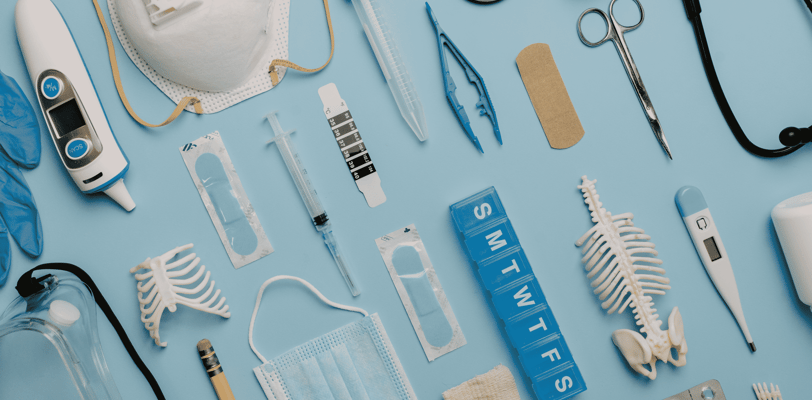What Are Medical Devices? Understanding Their Role in Healthcare
When you hear the term "medical devices," what comes to mind? You might think of high-tech machines in hospitals, but medical devices include everything from a simple thermometer to advanced robotic surgical equipment. These devices play a crucial role in diagnosing, treating, and preventing diseases, improving millions of lives worldwide. In this blog, we’ll explore what medical devices are, how they are classified, and why they are essential in modern healthcare.
2/24/20252 min read


🔹 What Are Medical Devices?
A medical device is any instrument, tool, machine, or implant used for diagnosing, treating, preventing, or monitoring medical conditions. Unlike medicines, which work through chemical reactions in the body, medical devices function through physical or mechanical action.
🔹 Examples of medical devices:
✔ Thermometers (measure body temperature)
✔ Blood pressure monitors (track heart health)
✔ Insulin pumps (help diabetes patients manage blood sugar)
✔ Pacemakers (regulate heartbeats)
✔ MRI scanners (help doctors see inside the body)
🔹 Types of Medical Devices
Medical devices are classified based on their risk level and complexity.
1️⃣ Low-Risk Devices (Class I)
These are simple, non-invasive devices with minimal risk to patients.
✔ Bandages
✔ Stethoscopes
✔ Surgical gloves
2️⃣ Medium-Risk Devices (Class II)
These devices require more regulations because they come in direct contact with patients.
✔ Blood pressure monitors
✔ Infusion pumps
✔ Contact lenses
3️⃣ High-Risk Devices (Class III)
These devices are life-supporting or implanted inside the body, requiring strict testing and approvals.
✔ Pacemakers
✔ Artificial heart valves
✔ Implantable defibrillators
🔹 The Role of Medical Devices in Healthcare
Medical devices revolutionize healthcare by helping doctors diagnose diseases, treat conditions, and improve patient outcomes. Here’s how they contribute:
✅ 1. Early Disease Detection
Medical devices help identify health problems before symptoms appear, leading to early treatment.
🔹 Example: Mammography machines detect breast cancer at an early stage.
✅ 2. Accurate Diagnosis
Doctors rely on medical devices to get precise and reliable results for better treatment decisions.
🔹 Example: MRI and CT scans help detect tumors, fractures, and internal injuries.
✅ 3. Life-Saving Treatments
Some devices help sustain life by supporting vital functions.
🔹 Example: Dialysis machines remove toxins from the blood in kidney failure patients.
✅ 4. Remote Health Monitoring
Wearable medical devices allow patients to track their health and send data to doctors without hospital visits.
🔹 Example: Smartwatches monitor heart rate, oxygen levels, and ECGs.
✅ 5. Improved Quality of Life
Many devices help restore mobility, hearing, and independence for patients.
🔹 Example: Prosthetic limbs allow amputees to walk again.
🔹 Future of Medical Devices
The medical device industry is constantly evolving with new technologies. Some exciting innovations include:
🚀 Artificial Intelligence (AI) in diagnostics – AI-powered tools help detect diseases faster.
🚀 3D-printed implants – Custom-made prosthetics and implants for better patient fit.
🚀 Wearable health trackers – Advanced smartwatches and patches for real-time health monitoring.
🚀 Nanotechnology in medicine – Tiny devices that can target and treat diseases at the cellular level.
🔹 Final Thoughts
Medical devices are a vital part of healthcare, from simple thermometers to life-saving implants. They help in early detection, accurate diagnosis, and effective treatment, improving patient care worldwide. As technology advances, medical devices will continue to transform the way healthcare is delivered.
